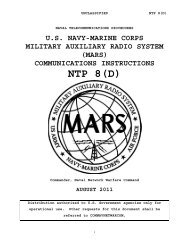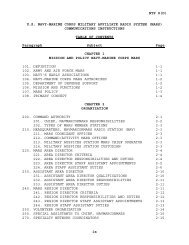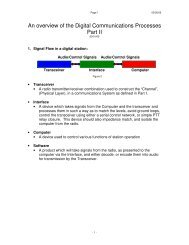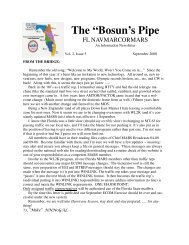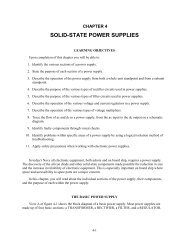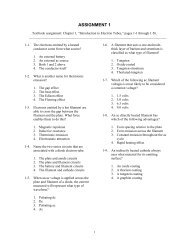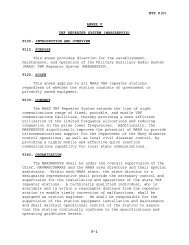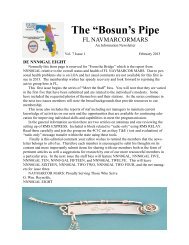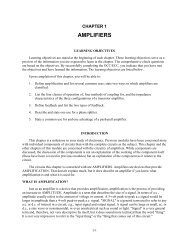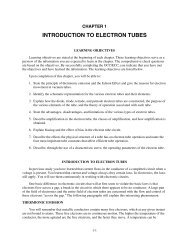Create successful ePaper yourself
Turn your PDF publications into a flip-book with our unique Google optimized e-Paper software.
impressed on the voltage circuit, current is proportional to and in phase with the line voltage. Figure 3-19shows the proper way to connect a wattmeter into a circuit.Figure 3-19.—Wattmeter connection.Wattmeter ErrorsElectrodynamic wattmeters are subject to errors arising from such factors as temperature andfrequency. For example, heat through the coils eventually causes the small springs attached to the pointerto lengthen and lose tension, which produces deflection errors. Large currents through the wattmeter alsoproduce a noticeable deflection error. These errors are caused by the heat (I 2 R) loss through coils from theapplication of high currents. Because of this, the maximum current range of electrodynamic wattmeters isnormally restricted to approximately 20 amperes. The voltage range of wattmeters is usually limited toseveral hundred volts because of heat dissipation within the voltage circuit. However, the voltage rangecan be extended by the use of voltage multipliers.Good-quality, portable wattmeters usually have an accuracy of 0.2 to 0.25 percent. You mustremember, though, that electrodynamic wattmeter errors increase with frequency. For the higherfrequency and power ranges, special types of wattmeters are made specifically for those ranges. We willdiscuss two such wattmeters in chapter 5 of this module.Wattmeter OverloadsThe wattmeter consists of two circuits, either of which will be damaged if too much current passesthrough them. You should be especially aware of this fact because the reading on the instrument will nottell you whether or not the coils are being overheated. If an ammeter or voltmeter is overloaded, thepointer will indicate beyond the upper limit of its scale. In the wattmeter, both the current and potentialcircuit may carry such an overload that their insulations burn; yet the pointer may be only part of the wayup the scale. This is because the position of the pointer depends upon the power factor of the circuit aswell as upon the voltage and current. Therefore, a low power-factor circuit will provide a very lowreading on the wattmeter. The reading will be low, even when the current and voltage circuits are loadedto the maximum safe limit. The safe rating for each wattmeter is always distinctly rated, not in watts, butin volts and amperes.3-26




